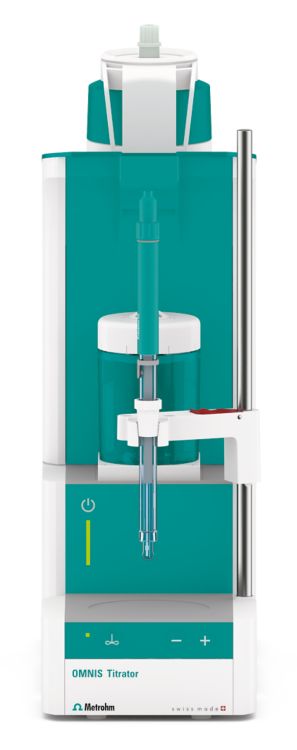The bromine index is an important parameter for the determination of aliphatic C=C double bonds in petroleum hydrocarbons. Bromine is generated in-situ from a solution of bromide and bromate, and the bromine index is determined by an electrochemical titration at 5 °C. For the titration, a solvent mixture of glacial acetic acid, methanol, and dichloromethane is usually used.
In this Application Note, the chlorinated solvent in the solvent mixture was replaced with toluene, resulting in a more environmentally beneficial method in comparison to ASTM D2710 and IP 299.
This application is demonstrated on heptane and cyclohexene, respectively.

The analysis is carried out on an OMNIS Advanced Titrator equipped with a double Pt wire electrode.
Before the sample is determination is determined, a blank determination is performed.
An appropriate amount of sample and solvent mixture consisting of glacial acetic acid, methanol, and toluene are added into the titration vessel. While stirring, the solution is cooled below 5 °C. The solution is then titrated with a solution of potassium bromide and potassium bromate until after the equivalent point is reached.
Well-defined, steep titration curves are obtained for both samples. In addition, low relative standard deviations below 1% are achieved. The results are displayed in Table 1.
| Bromine index (n = 6) | Heptane in mg/100 g sample | Cyclohexene in mg/100 g sample |
|---|---|---|
| Mean | 0.66 | 90.61 |
| SD(abs) / (mg/ 100 g sample) | 0.003 | 0.63 |
| SD(rel) / (%) | 0.4 | 0.7 |
Titration is an inexpensive method, allowing precise and reliable determinations of the bromine index of petroleum hydrocarbons based on ASTM D2710 and IP 299. The replacement of dichloromethane with toluene provides an environmentally friendly alternative for the analysis.
Using an OMNIS Titrator allows you to customize the system according to your needs and expand it for other titration applications.
Internal reference: AW TI CH1-1263-122018
 Partager l'application
Partager l'application
 Télécharger le PDF
Télécharger le PDF